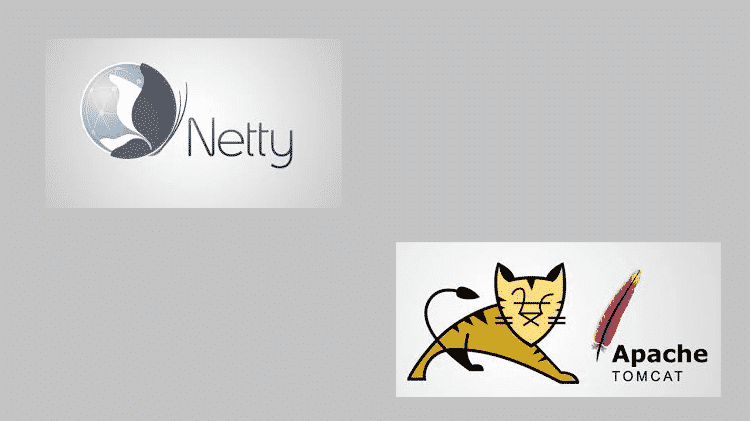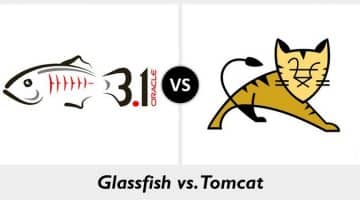The Developers describe the Netty being the “Asynchronous that is event-driven for the framework of network application”. Netty is mainly the framework of the NIO client-server which allows the quick as well as simple development of the network applications like the clients and protocol servers. It usually simplifies as well as streamlines the complete network programming like the UDP and TCP socket servers. However, Apache Tomcat is mainly detailed like “The open-source for the software implementation about Java Servlet as well as technologies of JavaServer Pages “. The Apache Tomcat usually powers various large-scale as well as mission-critical applications of the web that are across the diverse array of organizations and industries.
There is no doubt to the fact that Netty belongs to the category of “Concurrency Frameworks” of the tech stack, on the other hand, the Apache Tomcat may also be classified primarily under the “Web Servers”. On the other hand, “High Performance” is mainly the key or the top reason that more than 2 developers such as Netty, though the 76 developers usually mention “Easy” being the leading and proper cause to choose the Apache Tomcat.
Moreover, Netty, as well as Apache Tomcat, are known to be the tools for open source. It seems that the Netty having the stars of 19.9K GitHub as well as forks of 9.05K on GitHub has additional adoption as compared to Apache Tomcat having the 3.51K GitHub stars as well as forks of 2.4K GitHub.
As per the community of StackShare, Apache Tomcat usually has a broader set of approval, which is mentioned in the 566 company stacks as well as stacks of 432 developers as it is compared to Netty, that gets listed in mainly 11 company stacks along with the 14 developer stacks.
Netty:
Netty is the server framework of the NIO client that allows quick as well as simple development of the network applications like the clients as well as the protocol servers. It importantly simplifies as well as streamlines the programming of the network such as UDP and TCP socket server.
Apache Tomcat:
The powers of Apache Tomcat offer various large-scale as well as mission-critical kinds of web applications that are across some of the diverse range of organizations and industries.
Benefits of Netty!
The key benefit of Netty over just reading from as well as writing to the sockets using the streams is that the Netty supports the entire non-blocking as well as asynchronous I/O thereby using NIO API of Java when you will use the streams to simply read as well as write from the sockets even you will begin the new thread for every such connection that is well accepted from the ServerSocket, you are even using the synchronous I/O as well as blocking.
Moreover, Netty also approaches the scales in a better way, which is significant when the system required to handle various connections at the same point in time. When the system never requires to simply scale to various connections of simultaneous, it may not be worth trouble to simply use the framework such as Netty.
Some detailed information: The Threads are comparatively expensive resources in the operating system. Every thread requires the memory for stack (that could be of 2 MB in the size). While you will create various threads, it will cost you much of the memory; moreover, operating systems also have limits on a number of the threads which could be created. So you should not wish to start the new thread for every connection accepted.
Benefits of Apache Tomcat
The Apache Tomcat is mainly used for deploying the Java Servlets as well as JSPs. So in the project of Java, you may also build the WAR which is mainly the short for the Web ARchive file, and only drop it in deploy directory in the Tomcat. Hence, Apache is the HTTP Server as well as serving HTTP. Moreover, Tomcat is the Servlet as well as the JSP Server that is serving some of the technologies of Java
Alternatives of Apache Tomcat and Netty!
– Jetty
It is mainly used in an extensive variety of products and projects, both in the productions and in the development. Jetty may also be embedded easily in the devices, tools, application servers, and frameworks as well as clusters. You may check the page of Jetty Powered for additional uses of Jetty.
– Mina
The Mina works very fast as it deploys the generator of Bash script. It simply generates the complete procedure as the Bash script and it also runs it thoroughly in the server. However, Compare this to likes of the Capistrano and Vlad, where each such command is separately run on the SSH sessions. Mina simply creates the SSH session for every single deploy thereby minimizing overhead SSH connection.
– Akka
Akka is the toolkit and also the runtime for creating highly distributed, concurrent as well as resilient applications that are message-driven on JVM.
– RxJS
Here, RxJS is the library for some of the reactive programming that are using the Observables, for making it quite easy and simple to compose the asynchronous or the callback-based code. Such kind of the project is simply the rewrite of the Reactive as well as the Extensions/RxJS having some better set of performance, enhanced modularity, enhanced debuggable call stacks, though even staying backward to be compatible, with the breaking changes which will reduce the surface of API.
– Finagle
Here Finagle is mainly extensible of the RPC system for JVM that is used to simply construct the servers of high-concurrency. Finagle implements the uniform server and client APIs for different protocols, and it is also designed for concurrency as well as for the high performance.
Conclusion:
The community of the StackShare, Apache Tomcat generally has some kind of the broader set related to the approval, which usually is mentioned in stacks of 566 company and also the stacks of the 432 developers as this is well compared to Netty, which also gets listed in 11 company stacks with 14 developer stacks.


